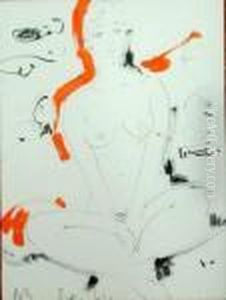Demeter H. Chiparus Paintings
Demeter H. Chiparus, also known as Dumitru Chipăruș, was a Romanian Art Deco era sculptor who gained fame for his chryselephantine (a combination of bronze and ivory) sculptures of dancers, which were popular during the interwar period. Born on September 16, 1886, in Dorohoi, Romania, to Haralamb and Saveta Chipăruș, he was the first of their seven children. From an early age, he displayed an affinity for art and went on to study at the local School of Fine Arts in Bucharest.
In 1909, Chiparus moved to Italy, where he continued his studies in Florence. He absorbed the classical Italian style, which would later influence his work. In 1912, he relocated to Paris, a hub for artists and intellectuals, and enrolled at the École des Beaux-Arts to further hone his craft. Paris at the time was a melting pot of creativity and the epicenter of the Art Deco movement, which would leave a lasting mark on Chiparus's work.
Chiparus first began exhibiting his work at the Salon in 1914, but his career was interrupted by World War I. After the war, he returned to Paris and the arts. The 1920s and 1930s were the peak of his career. He became known for his elegant sculptures that epitomized the Art Deco aesthetic, combining modern, stylized forms with classical elegance. His most famous works are the series of small bronze and ivory sculptures depicting exotic dancers from the Russian Ballet, French theatre, and early motion pictures. Many of these pieces were influenced by the costumes of designer Léon Bakst and were characterized by their elongated forms, intricate detailing, and luxurious materials.
Chiparus's works were produced using the lost wax casting method, which allowed for fine detailing. His use of ivory for the exposed flesh of the figures added a sense of luxury and realism. The figures often featured ornate and complex enameled and gilt costumes, capturing the lavishness of the Art Deco period. His sculptures were not only emblematic of the era's aesthetic but also captured the spirit of Parisian life and the fascination with exotic cultures.
Notable works by Chiparus include 'The Dancer of Kapurthala' (1922), 'The Russian Dancer' (1928), and 'Chrysis' (1930). His sculptures were highly sought after and collected by the fashionable elite of the time. Despite his success, Chiparus's work fell out of favor after World War II with changing tastes, and his name was largely forgotten by the art world until a resurgence of interest in Art Deco in the 1970s brought his sculptures back into the spotlight.
Demeter Chiparus died on January 22, 1947, in Paris. Today, his works are celebrated for their beauty and craftsmanship and are highly collectible, with his sculptures found in private collections and museums around the world. Chiparus remains one of the key figures of the Art Deco movement, and his legacy continues to be appreciated by art enthusiasts and collectors.

